The last few years have seen rapid advances in the field of healthcare and medical science. From virtual clinics to healthcare applications, the experience of patients, doctors, and organizations has changed to a great extent. The challenging times due to the pandemic have also pushed modern designers, healthcare professionals, and engineers to develop solutions that can reduce the spread of deadly diseases without compromising the quality of healthcare. A lot of mobile and web applications were launched in the last few years to track the symptoms and spread of COVID-19 and to ensure that the health of individuals is prioritized.
The design of products and services in the digital environment, however, can be challenging. The challenges get more pronounced when dealing with sensitive issues, such as healthcare. A number of healthcare startups face this issue as the digital products and services they design fail to meet the needs of the target audience. This is where engineers and healthcare professionals need to collaborate with UI/UX designers. The modern digital healthcare industry cannot be successful without design professionals as they bring a user-centered approach to the process.
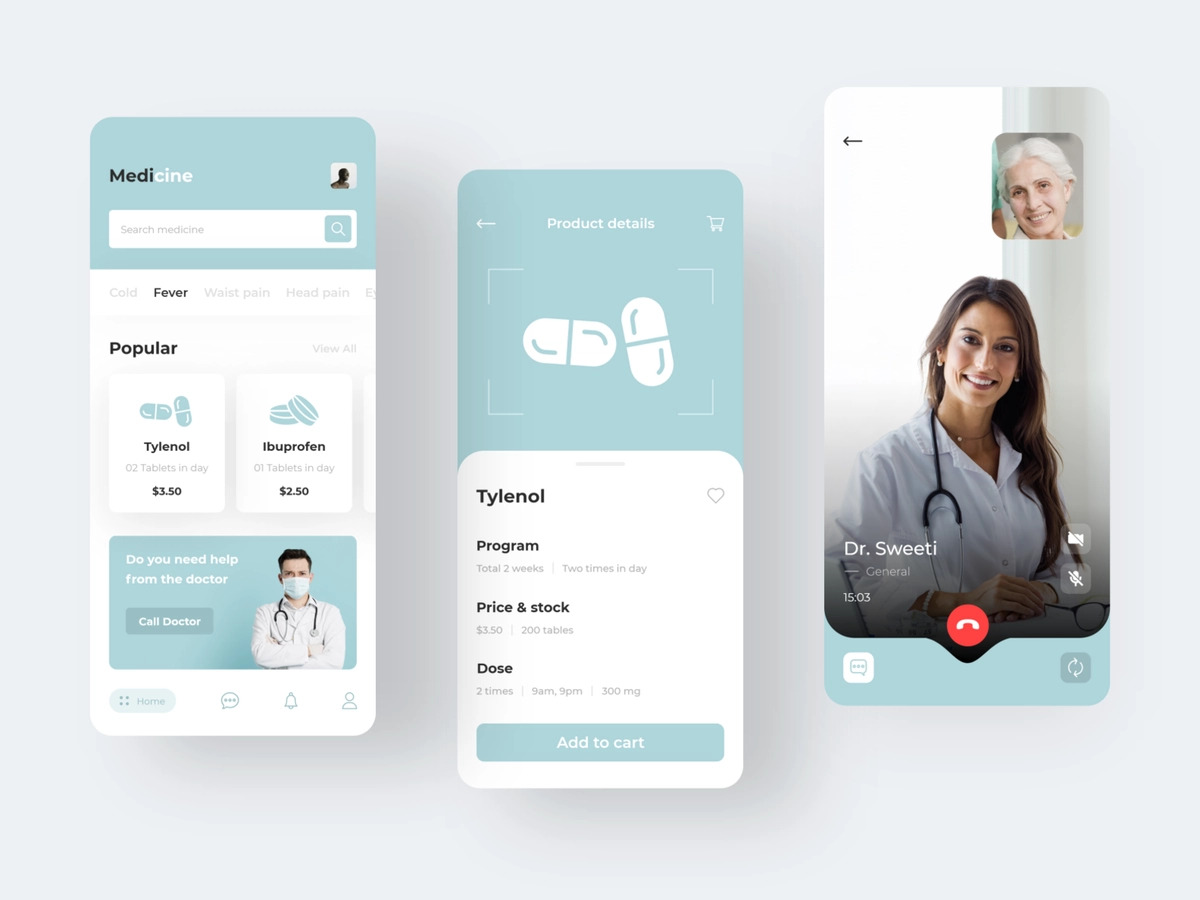
The value of services provided by a UI/UX designer or a healthcare UX design agency cannot be overstated in the digital world. For all healthcare organizations of today, it is essential to give due attention to UI/UX design. This will not only help in improving the quality of the services provided but also produce a better, user-friendly interface that is crucial for patients and healthcare professionals alike.
In this article, we introduce the concept of user experience design in healthcare and the aspects a UI/UX designer needs to be aware of.
Healthcare UX Definition
Whether you’re an aspiring designer looking for healthcare UX jobs or just curious about the role of UX design in healthcare, it is important to understand what the term means. Healthcare UX, as the name suggests, is an interdisciplinary concept where both healthcare and design join hands to create products and services that can meet the needs of users.
What is healthcare UX?
Healthcare UX design refers to the holistic experience of the target audience with a healthcare product or service. UX in healthcare apps and products is essential to create a pleasant and useful experience for the users.
Bad healthcare UX is one of the reasons that a product may fail, whether in the digital or physical environment. There is a rising demand for design professionals in the field of healthcare. This means that modern organizations recognize the importance of UX research in healthcare and, hence, the need to prioritize the needs of the audience. A glance at some of the well-designed applications, such as the Health App for iOS, indicates how designers take special considerations to ensure a good overall experience.
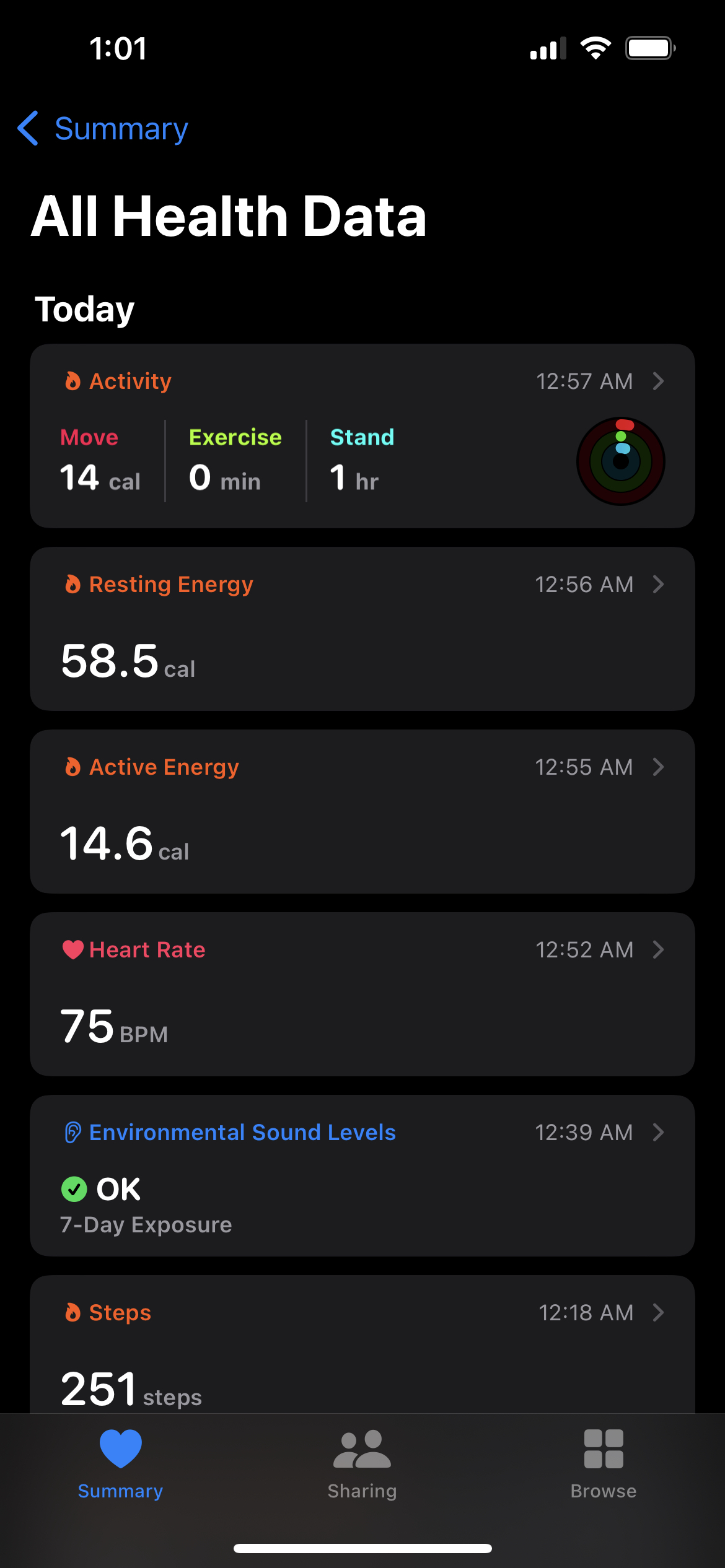
Given the digital healthcare trends and the reliance on mobile applications, it is important for UI/UX designers to focus on this development. Design professionals need to ensure that the user interface design for healthcare applications adheres to the basic UI/UX principles. What follows is a discussion on the importance of healthcare experience design and some of the key concerns for UI/UX designers.
Healthcare UX Importance
Like any other discipline dealing with technological advancement, the importance of user experience in healthcare cannot be neglected. In the last couple of years, particularly because of the pandemic, there was some sheer development in creating products and services that would help in maintaining good health. With a lot of digital services, including healthcare websites and mobile applications, it is essential to improve the value of medical user interface design.
Why is healthcare UX important?
As new technologies and solutions emerge in the field of medicine, healthcare user experience (UX) becomes increasingly important. It is essential for modern healthcare products to have usable, useful, and accessible designs to help the patients and healthcare providers alike.
Modern organizations creating healthcare technologies need to focus on the usability and usefulness of the products and services. The designers, on the other hand, need to consider the important aspects of healthcare UX design and implement those in their projects.
Three aspects of healthcare UX
When working on a medical UX design project, there are some elements specific to healthcare that need due attention. For example, in healthcare user interface design, it is important to consider the conditions in which the users will interact with the product or service. Wearable technologies may be used while running, walking, or driving. The design, therefore, should not be difficult to interact with to ensure safety and better accessibility.
There are three different aspects of healthcare UX, with respect to the audience, that the designers need to consider.
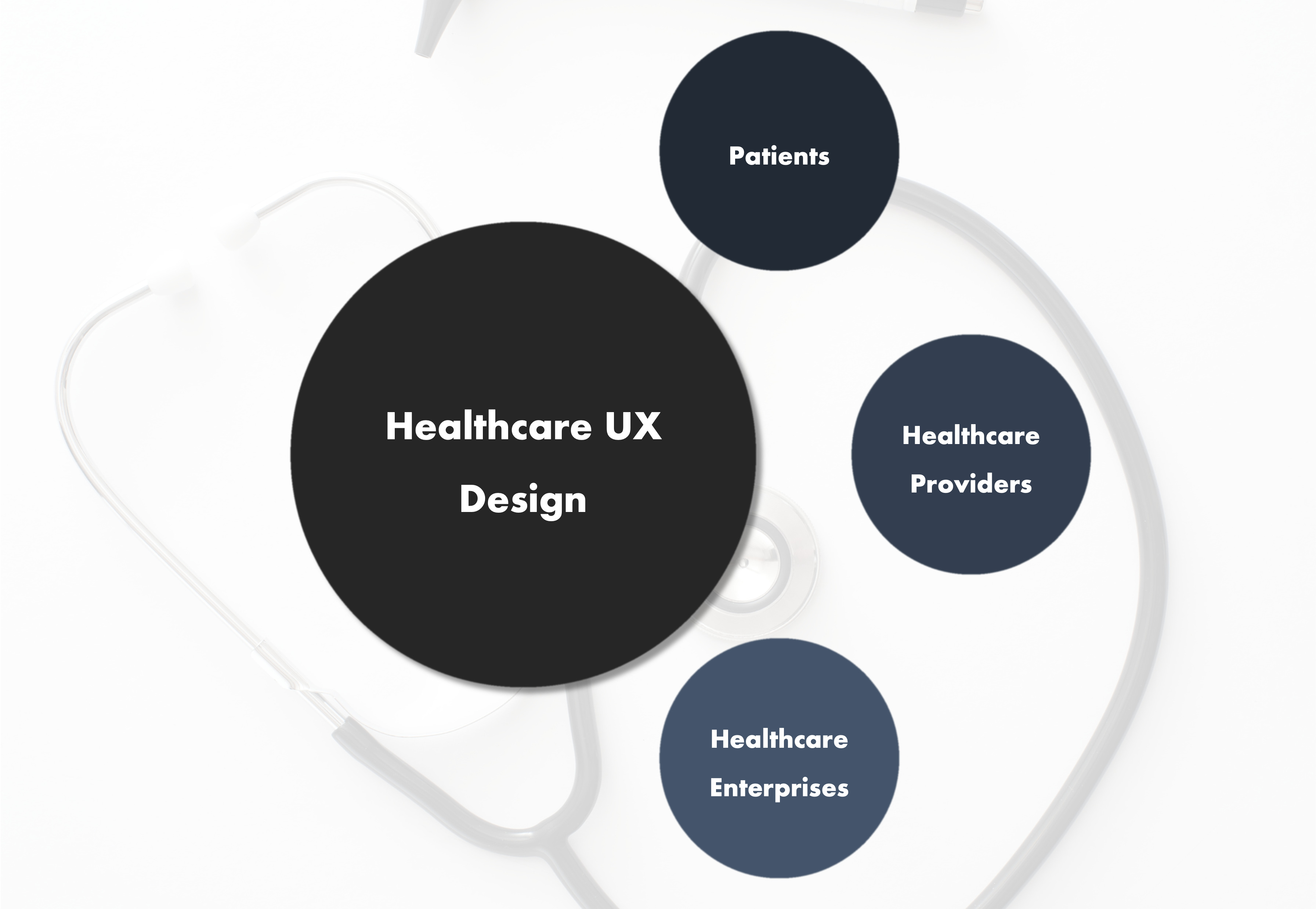
Patients
For healthcare technologies, patients or sick individuals are generally the most important audience group. The designers, therefore, need to be empathetic and make sure that they understand the pain of the users. Individuals may use healthcare websites and mobile applications in severe pain and in need of immediate attention. If the design is confusing and frustrating, it will only worsen the situation. When designing with patients in mind, a UI/UX professional must invoke feelings of empathy and ensure that the design is accessible and helpful at the same time.
It is possible that some technologies, such as a nutrition application, may be used by healthy people. In those cases, the design needs to be made adaptable so that all audience groups can use it with ease.
Healthcare providers
Depending on the nature of their work, healthcare providers may interact with various digital designs on a daily basis. Some of the important tasks include the maintenance of electronic health records, communicating with patients, and learning more about a particular illness. However, doctors, nurses, and other healthcare professionals are extremely busy individuals with very strict schedules. It is important that the designs are simple and the UI sticks to the principle of familiarity.
Since healthcare providers will be expected to interact with the technologies on a regular basis, it is, therefore, possible to add a tutorial or some helpful material if it helps them make the most out of the design.
Healthcare enterprises
One of the biggest audience groups, when it comes to healthcare UX design, is big organizations providing healthcare services. Hospitals, government authorities, pharmaceutical companies, and insurance providers use various technological solutions to ensure fast processes and better healthcare. This is where the job of a healthcare UX designer gets challenging as well as rewarding.
In such cases, it is important to have a thorough understanding of enterprise UX design as well as the concerns of healthcare enterprises. Since the audience is of an entirely different nature, it is essential to consider their needs, including the profit that they make with the help of a particular digital platform. Another important aspect here is to provide continuous support to organizations in the form of updates and technical assistance to ensure the smooth processing of their affairs.
Concerns for healthcare UX designers
When working with medical UI design, the designers are bound to come across some challenges specific to healthcare. These challenges, however, are manageable with the proper understanding of the audience and the nature of the technology being designed. Some of the important concerns that designers should always keep in mind when creating a product or service for the healthcare industry are as follows.
Ease of use
As mentioned before, healthcare products and services may be used in critical situations. When a patient is suffering, or a doctor has to update electronic records, the design needs to aid the task by making it simple and easy. If the design of the website, mobile application, or any other technological product does not help the users, it will never be successful.
Data security and privacy
Information about a patient’s records is extremely sensitive. When dealing with digital healthcare technologies, it is important for designers to ensure the privacy and security of healthcare information. If the design is not secure, the patients and healthcare providers will never even think of using it. In healthcare devices and solutions, the best way to achieve this security is to give control to the users and be transparent about the data being gathered.
Accessibility
Accessibility is an important concern for all products and services. The concern, however, gets more pronounced when dealing with healthcare technologies. It is important to understand that some users may have physical disabilities and need special assistance. The design, therefore, should include features that aid them when interacting with healthcare products and services. For example, having a built-in screen reader can help users with hearing disabilities.
Adaptability
Another important concern for healthcare UX designers is to make sure that the designs are flexible, adaptable, and expandable. This means that if a particular healthcare technology is used in another country or culture, it should not make the lives of users difficult. This is where the knowledge of cultural factors, also called cultural intelligence, comes into play. UI/UX designers should also create designs in a way that they are easy to update in the future. When new concerns come up, or the design needs to be altered in some way, it should not require the team to work from scratch.
Examples of Healthcare UX
Let us look at some examples from the modern healthcare industry, where good UX is critical to the success of medical technology. These examples include physical products as well digital services that the audience may interact with using multiple platforms and in different settings.
What are some examples of healthcare UX?
Considering the healthcare UX trends, some of the examples are as follows.
- Wearable technologies
- Telemedicine
- Healthcare chatbots
- Mental health virtual assistants
- Virtual reality
Some of the modern trends in healthcare user experience design include the following products and services.
Wearable technologies
Wearable technologies are gaining popularity every passing day. There are several ways in which watches and bands can help in monitoring the health of an individual. These technologies can also be used in emergency situations to seek help. Some of the best examples of wearable technologies in the healthcare industry include Fitbit and HeartGuide Blood Pressure Monitor Watch.
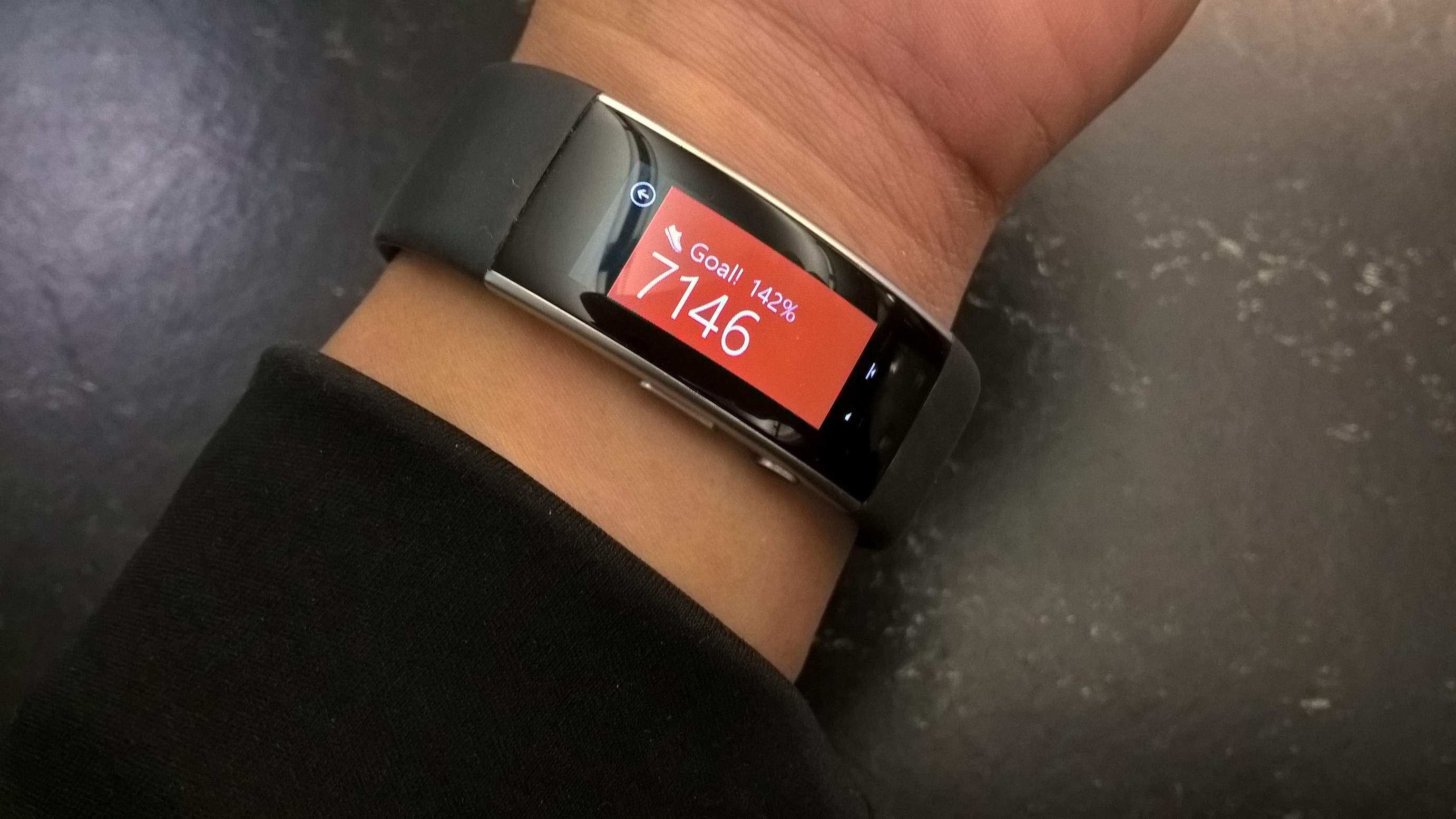
Telemedicine
Another rising trend in the field of healthcare is the use of online or virtual appointments with a healthcare professional. It will not be wrong to say that COVID-19 is partly responsible for this trend. This way of seeking consultation is often referred to as telemedicine or virtual clinic. There are several apps and websites designed to schedule an appointment and manage virtual communication between patients and doctors. MDLIVE is one such popular telemedicine platform.
Healthcare chatbots
Chatbots have always been important in managing fast and efficient communication. The use of chatbots in healthcare is an excellent resource for patients as well as healthcare providers. These chatbots, in some cases, can resolve the entire issue of a patient in a very short time. One such example is Babylon Health Chatbot which promises to provide 24/7 healthcare assistance.
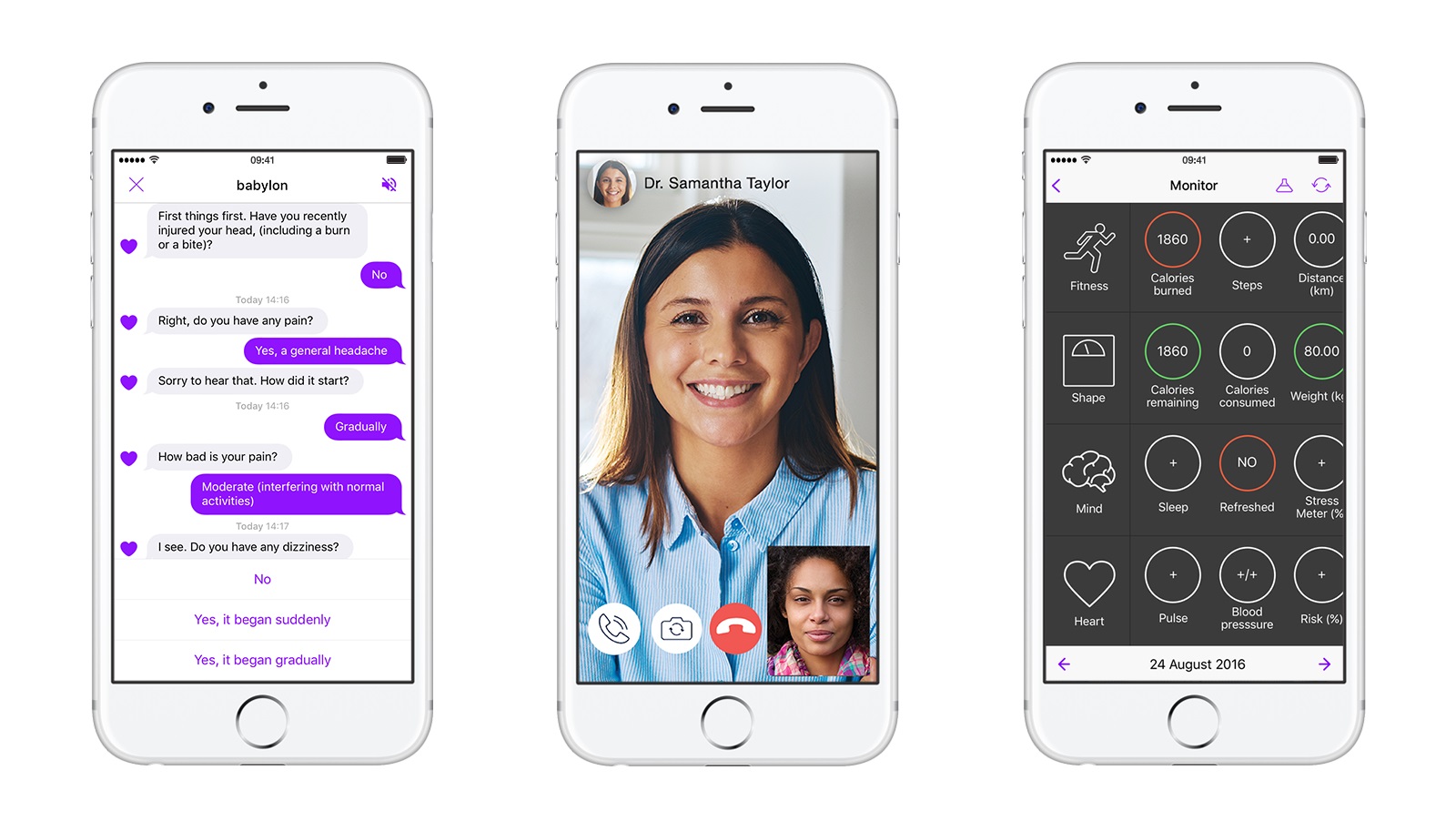
Mental health virtual assistants
One aspect of modern healthcare technologies is the focus on mental health. In trying times, such as quarantine during the pandemic, individuals need someone to talk to and seek guidance. There have been some advances in this area, and the introduction of virtual assistants focusing primarily on mental health is worth mentioning. One such example is Replika which provides assistance in the form of chat and audio calls to its users.
Virtual reality
The use of virtual reality (VR) in healthcare is also of great importance and interest these days. This is a huge leap for healthcare professionals as they can use VR to teach and train new doctors. The doctors in training can get a real-world experience with the help of VR and understand the cause and nature of an illness. Additionally, the use of VR is also helpful for doctors as they can use this technology to explain the nature of an illness to their patients. VR, therefore, is an excellent learning tool in healthcare.
Conclusion
The field of medicine and healthcare is in dire need of professional designers, and the impact created by good designs holds great value for patients, healthcare providers, and enterprises alike. If you’re a student of design, there’s a financial benefit in the field of healthcare UX design. A handsome healthcare UX designer salary, therefore, is also a good motivation to consider this field.
Aspiring designers can learn a lot from a healthcare UX case study. Case studies can help in understanding the good and bad features of a user interface, serving as a great educational resource. It is also a good idea to analyze an existing application, redesign it, and create a case study from scratch. Such projects look really good on the portfolio of a designer and help in applying for healthcare UX design jobs.
The demand for good interface and experience design in the field of healthcare is only going to increase in the days to come. It is, therefore, important for designers to get acquainted with the basic principles and challenges of healthcare design. This will help in creating better technologies and improving the quality of life at the same time.
Mar 2, 2022
